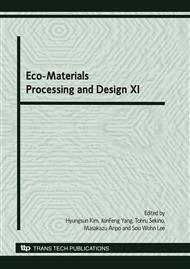p.248
p.252
p.256
p.260
p.264
p.268
p.272
p.276
p.280
Study on Thermal Environmental Characteristics of Water-Retentive Asphalt Pavement
Abstract:
Urban area may be warmer than surrounding regions due to asphalt and concrete for roads, buildings, and other artificial structures. Especially, pavements have become an important contributor to this effect by altering land-cover over significant portions of an urban area. Therefore, researchers have studied ways to reduce the heat island effect such as cooling pavement, porous pavements such as water-retentive or water absorbing pavements. Accordingly, this study aims at the development of water-retention asphalt pavement for urban areas in order to solve problems related to the distortion of water cycle and the heat island phenomena. Experimental results indicated that asphalt pavement using developed water retaining material was effective to decrease its surface temperature compare to other pavements. A correlation between air temperature and surface temperature of the pavement was obtained to estimate the efficiency of the developed pavement materials.
Info:
Periodical:
Pages:
264-267
Citation:
Online since:
July 2010
Authors:
Keywords:
Price:
Сopyright:
© 2010 Trans Tech Publications Ltd. All Rights Reserved
Share:
Citation:


